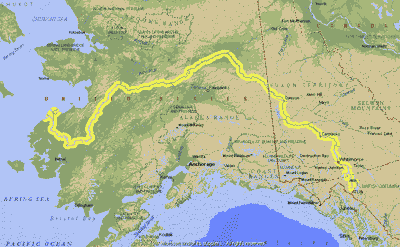ABOUT THE YUKON RIVER!


A FAR NORTH RIVER
The mighty Yukon river, third longest river in North America arises from a series of headwater lakes (Tagish, Atlin, & Teslin) which drain the coastal range mountains of northern British Columbia. Flowing northwest through the Yukon Territory, then westward through the heart of Alaska to the Bering Sea, it is the least populated and traveled of the major rivers, thus making it an excellent choice for a genuine wilderness experience!

AN HISTORIC RIVER
The Yukon is best known for it's role in the Klondike gold rush. In 1896 gold was discovered in Rabbit Creek (later named Bonanza Creek),a small stream feeding the Klondike river which inturn sparked the "Klondike Stampede" of 1897... the last great North American gold rush, and probably the last. Tens of thousands of people flooded the region from Seattle, up the Inside Passage to Skagway, then over the Chilkoot Trail to the headwaters of the Yukon river. At this point the adventurists built wooden rafts and continued their journey about 500 miles down the river to the heart of the Klondike in Dawson City. Before long there was a huge fleet of steam-powered sternwheeler riverboats which transported the people and their freight, but the great Gold Rush had about ended by 1899. The Yukon was the last waterway in North America whose settlements depended on the big sternwheelers. The construction of the Alaska Highway during WWII eventually forced them out of business and since the early 1950's the river is now traveled mostly by canoes, kayaks, and small boats. The Yukon is also one of the most important salmon-breeding rivers in the world. Each year it supports huge Chinook salmon returning to spawn in it's tributary streams. At the dam in Whitehorse has been built the worlds longest wooden fish ladder.
THE SALMON INDUSTRY
